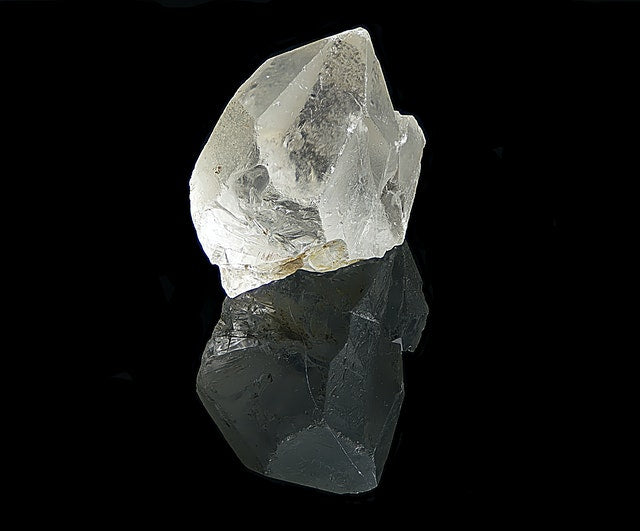Attributable to the disarray which may result from an absence of consistency in the naming of valuable
stones, it is entirely alluring that diamond setters and stone shippers illuminate themselves as to the
right utilization of the names of the diamonds, and that they use care in talking and recorded as a hard copy such
names.
As virtually all valuable and semi-valuable stones are gotten from a moderately modest number of
mineral species, as we found in Lesson XVIII., and as the study of mineralogy has a deliberate
also, methodical technique for naming the minerals, the best outcomes are had in the naming of pearls
at the point when we use, similarly as is conceivable, the language of mineralogy.
Old Usage. Since quite a while ago settled custom[150] and utilization, be that as it may, should be noticed, for any
arrangement of naming should be for the most part perceived to be helpful. Subsequently the appropriate name for
crimson, solidified oxide of aluminum, of jewel quality, as per the mineralogical framework
of naming, would be red corundum, yet that equivalent material is alluded to in the Old Testament
in this manner (in discussing shrewdness), "She is more valuable than rubies." It is clearly important to
keep and to utilize all such terms as have been for quite a long time set up in utilization, despite the fact that they do
not concur with the logical technique for naming the specific mineral. It is, in any case, essential
that any name, consequently held, ought to be effectively utilized, and that it ought not be applied to additional
than one material. In this way the term ruby ought to be saved only for red corundum, and not
applied to other red minerals like garnet, spinel, and so forth, as is over and over again done.
It will be the reason for this exercise to endeavor to go ahead as obviously and as momentarily as
possible[151] what comprises great use in the naming of the chief stones, and furthermore to
call attention to what off base utilization is most needing being stayed away from.
To cover the subject efficiently we will receive the request for hardness that we did in examining
mineral species in Lesson XVIII.
Extravagant Diamonds. Starting with the hardest of all pearls, the precious stone, we have no trouble as
respects naming, as all examples of this mineral, paying little heed to shading, are called jewels. When
it is important to assign specific tones or colors, or contrasts in color, extra names are
utilized—for instance, all precious stones of articulated and satisfying shading are classified "extravagant" jewels
in the exchange. Sure of these "extravagant" precious stones are even additionally characterized by utilizing a name
indicating the shading, as, for instance, "canary" jewels (when of a fine radiant yellow), or
"brilliant likes," when of a fine brilliant earthy colored, or "orange," or "pink," or[152] "absinthe green,"
or on the other hand "violet," all things considered.
Names of Various Grades of White Diamonds. The incredible larger part of the precious stones which
please the market as cut stones have a place, in any case, to the gathering which would be discussed as
white precious stones, yet many qualifying names are expected to communicate the level of way to deal with
unadulterated white controlled by various evaluations of these precious stones. In this way the terms: 1, Jägers; 2, Rivers;
3, Blue Wesseltons; 4, Wesseltons; 5, Top Crystals; 6, Crystals; 7, exceptionally light earthy colored; 8, Top Silver
Capes; 9, Silver Capes; 10, Capes; 11, Yellows, and 12, Browns, portray expanding profundity of
shading, and henceforth diminishing worth in precious stones.
Well known Names. Certain more well known names for jewels of contrasting levels of whiteness
may next be presented. The expression "blue white" (a much manhandled articulation, incidentally) ought to be
applied uniquely to precious stones of a nearby way to deal with unadulterated whiteness[153] of body substance, as
seen anxious in the paper that, when looked up and undimmed, they give a particularly solid play of
kaleidoscopic blue that any slight hint of yellow in their substance is totally camouflaged, and the
impact upon the eye is remarkably blue. This would be the situation with stones of the evaluations from 1
through 4 in the rundown above. Evaluations 5 and 6 may appropriately be classified "fine white," and grades 7, 8,
also, 9 essentially "white." Grade 10 is often discussed as "business white," and grade 11
some of the time as "crude." Grade 12 incorporates all levels of earthiness with the exception of the extremely light
conceals and the profound, pretty shades of the "extravagant" tans.
Rubies. Leaving the naming of the various shades of precious stones we go to the pearls outfitted
us by the mineral known as corundum. As we have recently seen, this mineral happens in numerous
various tones and with wide contrasts of color and shade in every one of the chief tones. The
best practice as to naming the[154] corundum jewels is to call the red material, when of
a decent, full red of satisfying shade, ruby. The best shades of dark red are normally called
"Burmah rubies" since more rubies of this quality are found in Burmah than elsewhere.
Any ruby of the necessary shade would, be that as it may, be known as a Burmah ruby in the exchange notwithstanding
of its geological beginning. The best color among Burmah rubies is what is known
as "pigeon blood" in shading. This tone is maybe more precisely characterized as like the shading in the
focus of the red of the sun powered range. Certain somewhat more profound red rubies are supposed to be of "meat
blood" shading. The English are said to incline toward these. Those of somewhat lighter color than pigeon blood
are here and there alluded to as of "French tone," from the way that they are liked by French
authorities.
Rubies of dull, garnet-like shade are known as "Siam rubies," numerous such being found in that
country. Light pinkish rubies are called[155] "Ceylon rubies." It ought to be obviously remembered
that every one of these "rubies" are of red corundum, and that in the entirety of their particular properties with the exception of shading
they are basically comparative.
Sapphires. Corundum of fine blue tone is known as "sapphire." The "cornflower blue" appears
to be most in favor as of now. Such sapphires are in some cases called "Kashmir sapphires" on the grounds that
numerous fine ones come from that State. "Ceylon sapphires" are typically paler than the cornflower
blue. "Montana sapphires" are ordinarily of greenish blue or pale electric blue. Such fine blue
stones as are mined in Montana would be sold under another name as indicated by the nature of
their shading, and not as "Montana sapphires." "Australian sapphires" are of an exceptionally profound, inky
blue, and don't order an excessive cost. Here once more, similarly as with rubies, the grouping depends
upon the shading instead of upon the beginning, albeit the geological names that[156] are utilized,
accurately express the standard wellspring of stones of the specific tone.
All corundums other than ruby and blue sapphire are generally called by the expression "sapphire," with
a passing descriptive word assigning the shading; accordingly we may have pink sapphire, brilliant sapphire,
green sapphire, and so on When of fine yellow shading the yellow sapphire is once in a while called
"Oriental topaz" by goldsmiths, the expression "Oriental" as hence utilized demonstrating that the material is
corundum. We additionally have "Oriental amethyst" and "Oriental emerald" for the purple, and the fine
green, and "Oriental sea blue" for the light blue-green corundum. The yellow corundum is
additionally once in a while called "Lord topaz," particularly in Ceylon. Second rate sapphires of pretty much every
possible tone are regularly various in parcels and sold as "extravagant sapphires." Such parts,
in any case, quite often need renaming as they frequently contain upwards of twelve mineral
species other than corundum.[157]
Sapphires and rubies of moment cylindrical inside structure every now and again show a wonderful six-
guided star when cut toward a round-beat cabochon shape and presented to coordinate daylight or to
light from some other single source. Such stones are named "star sapphire" and "star ruby."
The fake rubies and sapphires should all be called logical ruby or sapphire, and not
"reproduced" or "manufactured" as none are made to-day from little, genuine rubies, and as the
measure is in no sense a synthetic amalgamation.
Chrysoberyl. Leaving the corundum jewels we come close to chrysoberyl. At the point when the diamonds
outfitted by this mineral are of a fine green by sunshine, and of a raspberry red by fake light,
as is at times the situation, they ought to be classified "Alexandrites" (after the Czar Alexander II., in
whose domains, and on whose birthday, the principal examples are said to have been found).
At the point when chrysoberyl is of fibrous[158] or rounded inward construction it bears the cost of cat's-eyes (when
cabochon cut), and these ought to be explicitly named as "chrysoberyl cat's-eye" to recognize
them from the less wonderful and less significant quartz cat's-eyes. Different assortments of chrysoberyl
(the greater part of those showcased are of a greenish-yellow tone) are accurately named basically
"chrysoberyls." Such stones are, in any case, now and then erroneously called "chrysolite" by the exchange,
what's more, this training ought to be rectified, as the term chrysolite applies effectively just to the mineral
olivine which gives us the peridot.
Spinel. Next in the request that we have picked comes "spinel." The more important spinels are of a
red shading that to some degree intently moves toward the red of certain rubies. Such red spinels ought to be
called "Ruby spinel" (and not spinel ruby). The actual stones some of the time get blended in with
corundum rubies (they are as often as possible found in a similar diamond rock), and this makes it all the
more[159] vital that the two stones and names ought to be obviously recognized. A few sellers
call ruddy spinels "Balas ruby" (rose red), and orange red ones "rubicelle." Violet red spinel is
some of the time called "almandine spinel." It is entirely alluring that the name of the mineral species,
spinel, ought to be utilized, along with a passing shading modifier, in naming diamonds of this species,
Maybe than such terms as "rubicelle," "balas ruby," "spinel ruby," and so on
Topaz. We come now to topaz. Valid, or valuable topaz, as it is normally called, to recognize it
from the milder and less significant yellow quartz, is only occasionally found in the exchange to-day. Gem dealers
quite often mean yellow q

